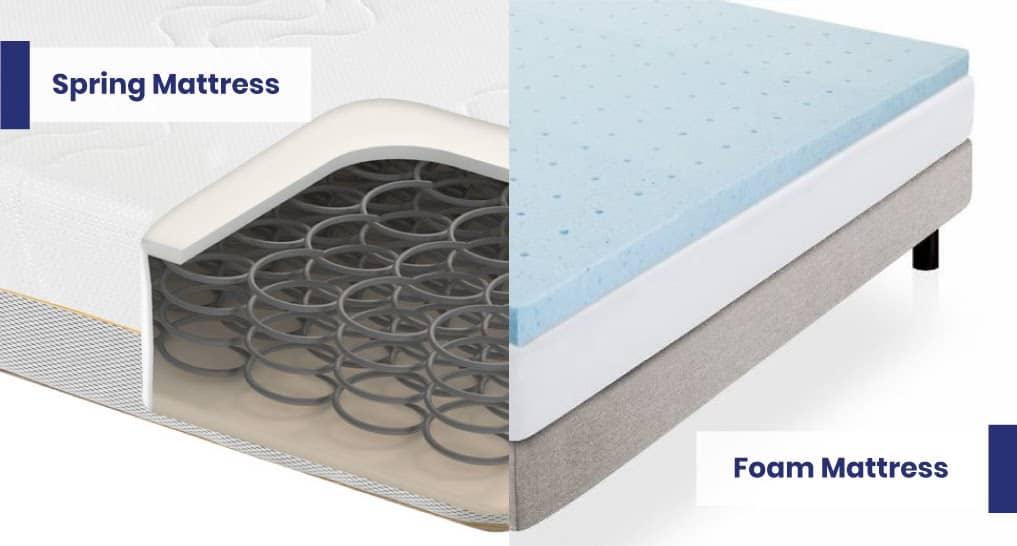When it comes to choosing a mattress for a hospital bed, there are several factors to consider. Comfort, support, and durability are of utmost importance to ensure the well-being and recovery of patients. Two popular options for hospital bed mattresses are foam and spring mattresses. In this article, we will delve into the characteristics of both types and discuss which one might be better suited for a hospital bed.
Understanding Foam Mattresses
What is a Foam Mattress?
A foam mattress is primarily composed of layers of foam materials, such as memory foam or latex foam. These mattresses conform to the shape of the body, providing excellent pressure relief and support.
Benefits of Foam Mattresses
- Pressure Relief: Foam mattresses distribute body weight evenly, reducing pressure points and minimizing the risk of bedsores for bedridden patients.
- Motion Isolation: Foam absorbs movement, ensuring minimal disturbance to other patients sharing the bed.
- Comfort: The contouring nature of foam provides a cozy and comfortable sleeping surface.
- Allergy-Friendly: Foam mattresses are hypoallergenic, resisting dust mites and mold, which is particularly important for patients with respiratory conditions.
Drawbacks of Foam Mattresses
- Heat Retention: Some foam mattresses have a tendency to retain body heat, which may cause discomfort for individuals who easily feel hot during sleep.
- Less Bounce: Foam mattresses offer little to no bounce, which may be a disadvantage for patients who require assistance in changing positions.
Exploring Spring Mattresses
What is a Spring Mattress?
A spring mattress, also known as an innerspring mattress, contains a support system of metal coils. These coils provide a sturdy structure and are typically covered with padding and upholstery layers for added comfort.
Benefits of Spring Mattresses
- Support and Stability: Spring mattresses offer firm support, making them suitable for patients who need extra stability while lying in bed.
- Breathability: The open structure of spring mattresses allows for better airflow, preventing heat buildup and promoting a cooler sleeping environment.
- Bounce: The springy nature of these mattresses can make it easier for patients to reposition themselves or get in and out of bed.
Drawbacks of Spring Mattresses
- Pressure Points: Spring mattresses may create pressure points on the body, leading to discomfort and potential bedsores.
- Motion Transfer: The movement of one person can cause the entire mattress to bounce, which might disturb other patients sharing the bed.
- Durability: Spring mattresses may experience sagging or coil deformation over time, reducing their lifespan.
Which Mattress is Better for Hospital Beds?
Determining whether a foam or spring mattress is better for a hospital bed depends on the specific needs and preferences of the patient. However, in many cases, foam mattresses tend to be the preferred choice due to their superior pressure relief and comfort.
Foam mattresses excel in providing the necessary support to alleviate pressure on sensitive areas of the body, such as the hips, shoulders, and back. This is particularly important for patients who spend extended periods in bed, as it reduces the risk of developing pressure ulcers.
Moreover, foam mattresses offer better motion isolation, ensuring minimal disturbance when patients need to move or change positions during the night. This can significantly enhance the quality of sleep and promote a faster recovery.
While spring mattresses may provide good support and breathability, their potential drawbacks, such as pressure points and motion transfer, make them less suitable for hospital beds.
Conclusion
Choosing the right mattress for a hospital bed is crucial for the well-being and comfort of patients. While both foam and spring mattresses have their advantages, the foam mattress emerges as the preferred choice for hospital beds. Its ability to provide superior pressure relief, excellent motion isolation, and allergy-friendly properties make it an ideal option for patients in need of optimal comfort and support.
By considering the specific needs and preferences of patients, healthcare professionals can ensure that they select the most suitable mattress for hospital beds, promoting better sleep quality, faster recovery, and overall well-being.
FAQs
- Can I use a regular mattress on a hospital bed? Using a regular mattress on a hospital bed is not recommended, as it may not provide the necessary support and comfort needed for patients. It's best to choose a mattress specifically designed for hospital beds.
- Are foam mattresses suitable for patients with back pain? Foam mattresses, especially memory foam, can be beneficial for patients with back pain. They contour to the body's shape, relieving pressure on the spine and promoting proper alignment.
- Do foam mattresses retain odors? Foam mattresses are typically designed to be odor-resistant. However, it's important to choose high-quality mattresses and ensure proper ventilation in the room to prevent any potential odor accumulation.
- Can spring mattresses cause allergies? While spring mattresses themselves are not likely to cause allergies, the materials used in their upholstery and padding may harbor allergens like dust mites. Regular cleaning and maintenance can help minimize allergy risks.
- How often should hospital bed mattresses be replaced? Hospital bed mattresses should be replaced according to manufacturer recommendations or when signs of wear and tear, sagging, or loss of support become apparent. Regular inspections can help determine when replacement is necessary.





